Operation Bhishma Winter Solstice 2020
Can you find angle of Earth's axis tilt with the traditional tools at an ancient Khmer Temple called Prasat Phupek located on mountaitop +520 m above sea level, Sakon Nakhon Province northeast of Thailand

.jpg)
An ancient Khmer temple called "Prasat Phupek" is located on the mountaintop +520 m above sea level in Sakon Nakhon Province northeast of Thailand
Why the name Operation Bhishma?
Bhishma was a great hero in Mahabharata war, he was blessed with a boon from his father that he could choose the time of his death or he may remain immortal till he desires. In oder to end the war between the two brothers Bhishma decided to die on the arrow bed of Arjuna on the day of winter solstice. In fact he secretly told Arjuna how to kill him with the arrow because he was related to both brother Pandavas and Kauravas. This astronomical operation is conducted on winter solstice 21 - 22 December 2020 so that's is why the name "Operation Bhishma"

Bhishma fighting in Mahabharatana War and decided to die on the arrow bed of Arjuna
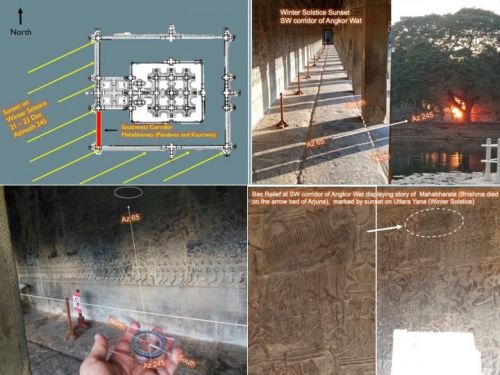
The southern west corridor of Angkor Wat Temple Cambodia is showing winter solstice sunlight fall on bas-relief of Bhishma died on the arrow bed
The Astronomical Temple
An ancient Khmer ruin called "Prasat Phupek or Phupek Temple" located on the mountaintop +520 m above sea level in Sakon Nakhon Province Thailand. It is precisely oriented to the four astronomical alignments known as equinoxes and solstices
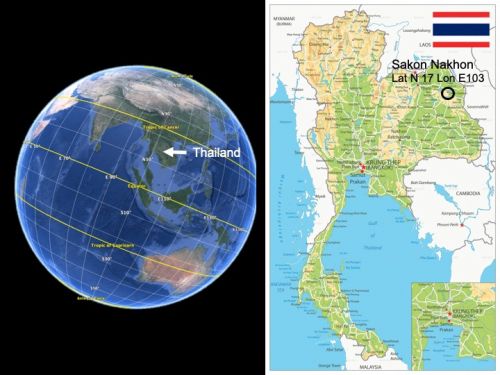
Sakon Nakhon Province Thailand
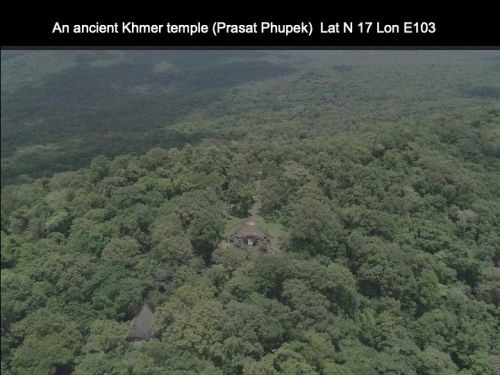
Prasat Phupek is an ancient Khmer temple located on the mountaintop +520 m above sea level, Sakon Nakhon Province Thailand

Prasat Phupek is oriented to the four astronomical alignments
How to prove that the temple is astronomically oriented
As a matter of fact, it can be proven by the two-thousand-years-old technology called "shadow plot" as well as the physical evidences on vernal equinox 21 Mar and autumnal equinox 23 Sep

The onsite shadow plot was conducting on 7th Feb 2007
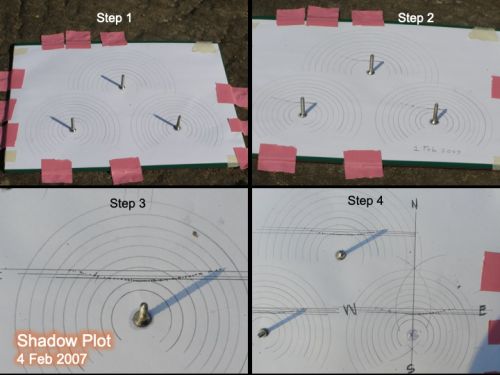
It takes time from morning to afternoon to find East - West - North - South
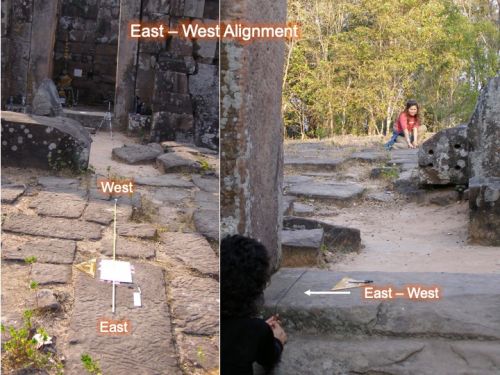
East and West alignment
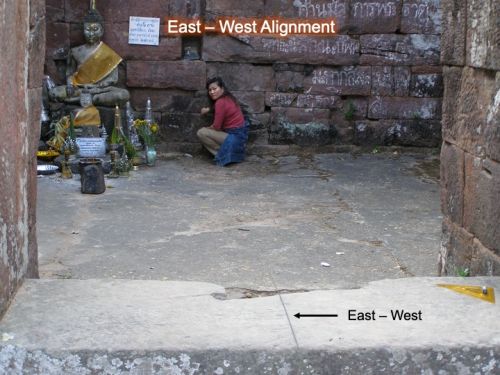
Measuring East and West and comparing to the ancient Khmer alignment
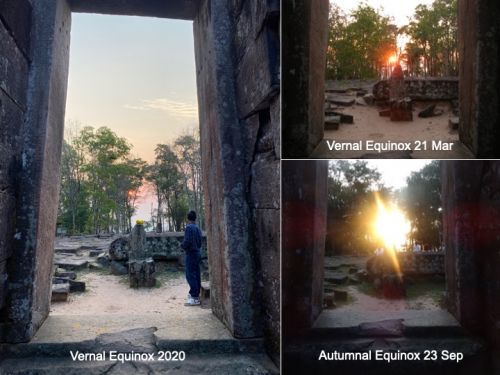
Astronomical events (vernal equinox and autumnal equinox)
Does the temple is fit to conduct astronomical operation
Yes, although it is unfinished ancient Khmer ruin but fully equiped with mathematical and astronomical qualifications. Due to the orientation to the four cardinal points it makes sunlight at solar noon on winter solstice and summer solstice fall precisely on the vertical lines on the northern and southern wall (false doors)
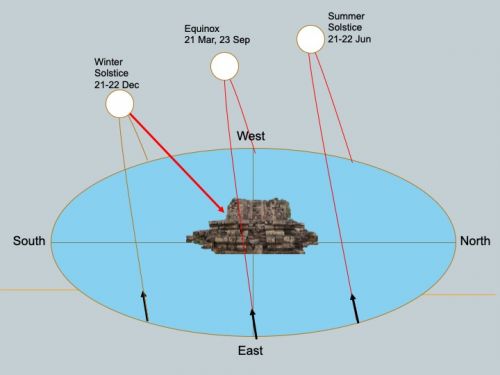
The temple is precisely oriented to four cardinal points
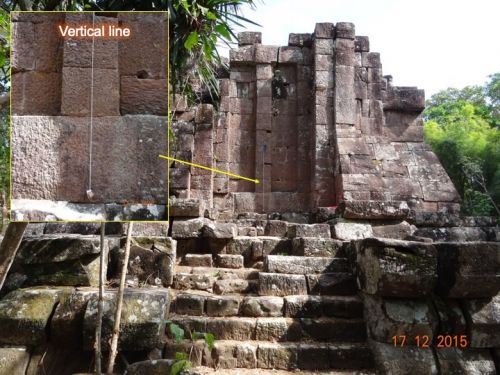
Vertical line on the southern wall
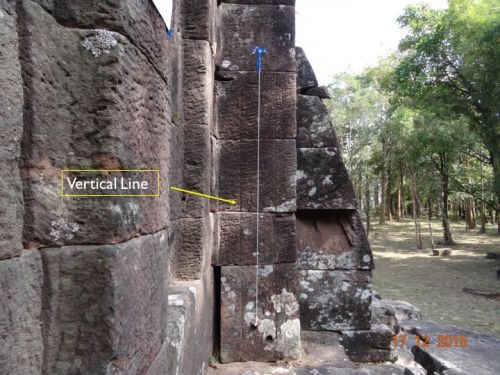
Plumb and rope are showing that the temple is standing vertically
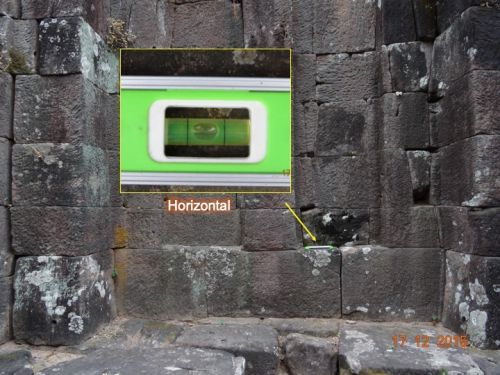
Water level is showing that the temple is horizontally stationing
Prove that Earth's axis tilt is around 23.5
In general we know that Earth's axis tilt is about 23.5 (Google said the actual current Earth's axis tilt is 23.43656). The question is can you prove it by yourself without Google or any orther modernized tools? Please follow me I will show how to do it with the help of an ancient Khmer ruin called "Prasat Phupek" and simple tools called sundial
.jpg)
Believe it or Not? These 2 simple tools called sundial + a vertical line on the southern wall can easily measure Earth's axis tilt
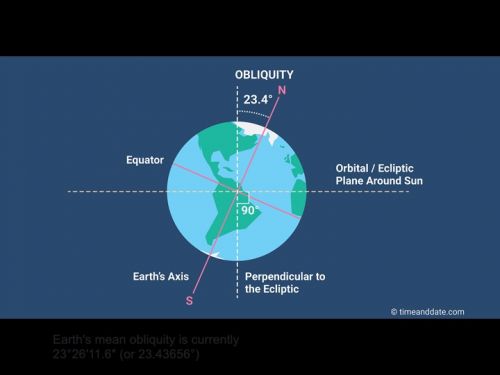
According to the Google, current Earth's axis tilt is about 2.4 degree
Step 1 Create methematic equation to calculate the Earth's axis tilt
aw = Angle of incidence at solar noon on winter solstice 21- 22 December 2020
a = Angle of incidence at solar noon on vernal equinox 21 March 2019
Earth's axis tilt = aw - a
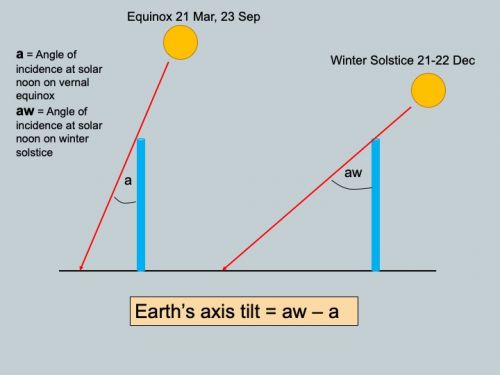
Step 2 prove the equation
On winter solstice 21 - 22 Dec 2020 sunlight fall at right angle to the Earth surface at latitude 23.5 south, If A "stick G" (gnomon in Greek) is installed perpendicularly to the ground at Prasat Phupek (local latitude 17 N) the angle of incidence of sunlight at solar noon can be found by tangent of shadow's lenght and height of the stick G

Earth orbiting the sun with axis tilt and causes 4 astronomical events known as vernal equinox 21 March, summer solstice 21-22 June, autumnal equinox 23 September and winter solstice 21- 22 December on the other hand they are 4 seasons

On winter solstice Sunlight fall perpendicularly (90 degree) to the ground at tropic of capricorn (latitude 23.5 S)
.jpg)
Proving the equation of Earth's axis tilt (T = aw - L) aw = angle of incidence at solar noon on winter solstice, L = local latitude at Prasat Phupek
.jpg)
On vernal equinox 21 March, the angle of incidence at solar noon (a) = degree of the local latitude (L)
Step 3 Finding degree of local latitude at Prasat Phupek on vernal equinox 21 March 2019 (Operation Eratosthenes 2019) here we got 17.354
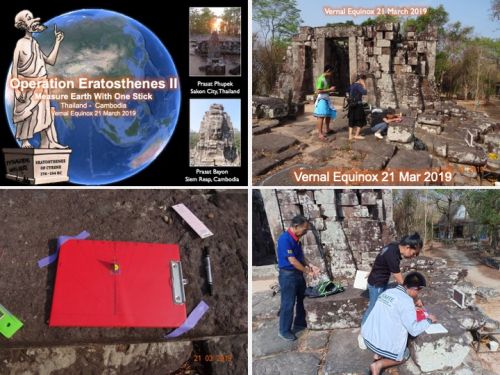
A horizontal sundial is employed at Prasat Phupek on vernal equinox 21 March 2019
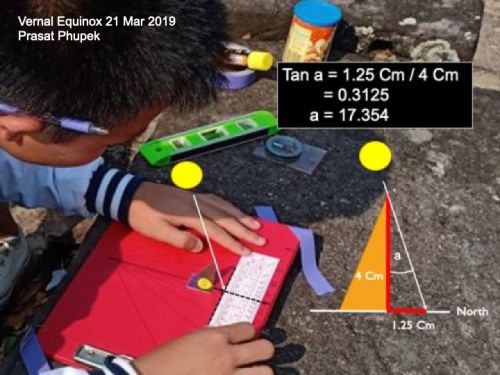
Angle of incidence at solar noon on vernal equinox is found with the help of horizontal sundial (a = 17.354)
.jpg)
Big thanks to teacher Pang and teacher Chol from Sakonraj Wittayanukool School as well as one of their science students, without them I have to do everything by myself
Step 4 A night before Operation Bhishma
Starting an evening session 21 December 2020 with light and sound show "Amazing Prasat Phupek" and camping overnight at temple site on the mountaintop +520 m. above sea level to challenge the winter solstice atmosphere and wind-chill-effect of 10 celsius. Early morning 22 December 2020 welcome sunrise on winter solstice by an ancient stone solar calendar and followed by prayer to remove bad luck performed by a welknown Thai Traditional Astrologer
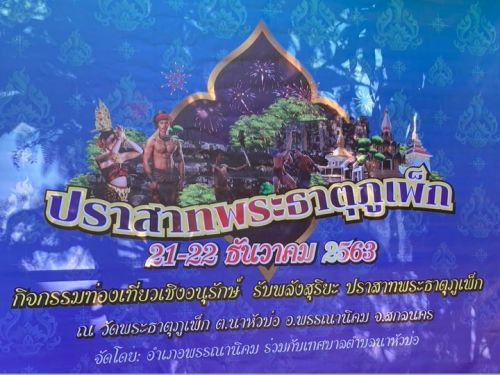
Cutout advertising cultural tourism at Prasat Phupek 21 - 22 December 2020
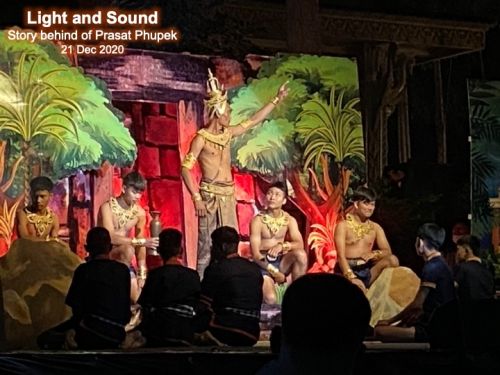
Watching a Light and Sound show "Amazing Phupek" in the evening 21 December 2020
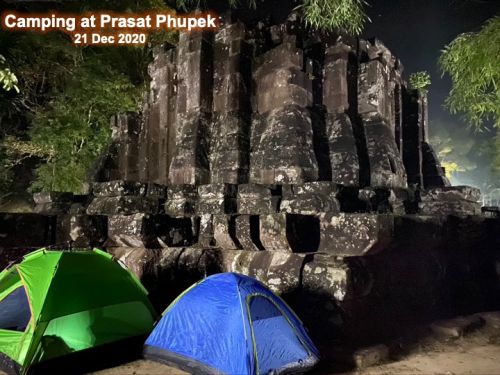
Camping overnight 21 December 2020 at Prasat Phupek
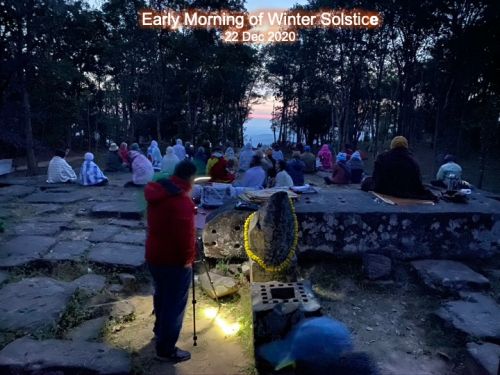
Welcome early morning winter solstice 22 December 2020
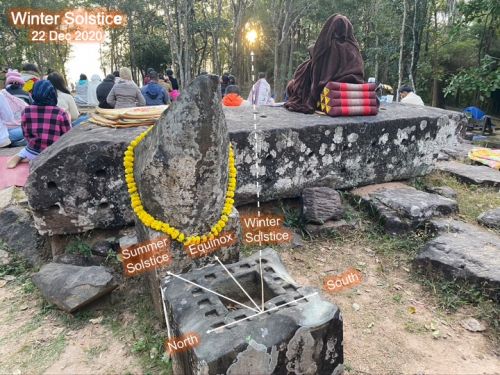
The stone solar calendar demontrating sunrise on winter solstice 22 December 2020
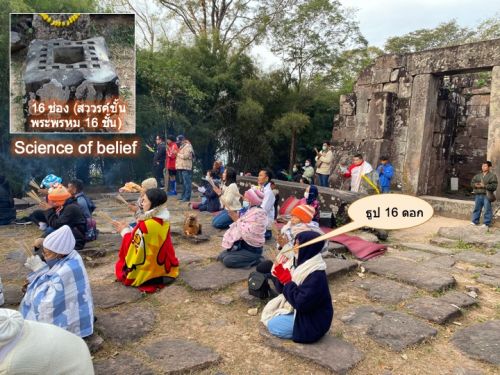
Prayer to remove bad luck performed by a welknown Thai Traditional Astrologer
Step 5 Operation Bhishma 2020
Installing a vertical sundial on the southern wall of Prasat Phupek to calculate angle of incidence at solar noon on winter solstice
.jpg)
winter solstice sunlight fall on the southern wall of Prasat Phupek
.jpg)
The southern wall is serving as plaform to fix a vertical sundial
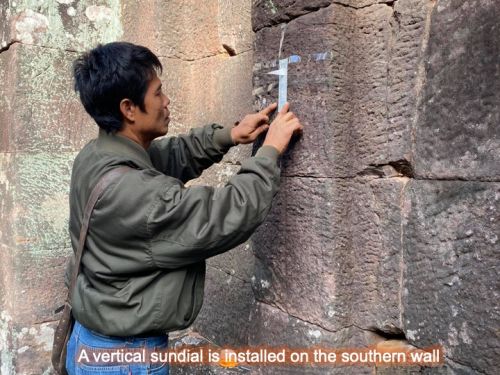
A vertical sundial is installed to align with the existing marked vertical line
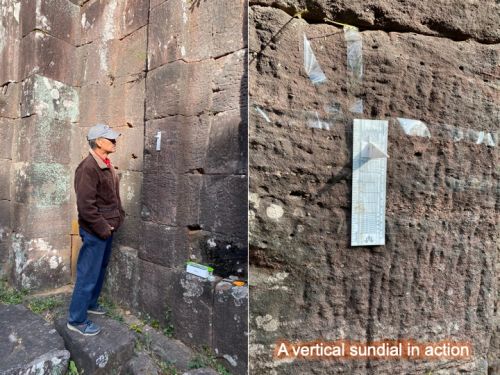
A vertical line on the southern wall is representing solar noon of sunlight
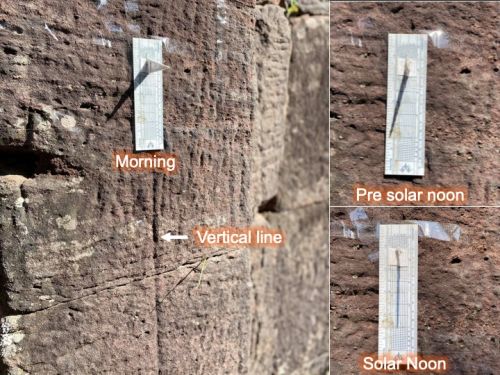
The vertical sundial is showing shadow path from morning to solar noon
.jpg)
Shadow of sundial at solar noon is corresponding to the vertical line on the southern wall
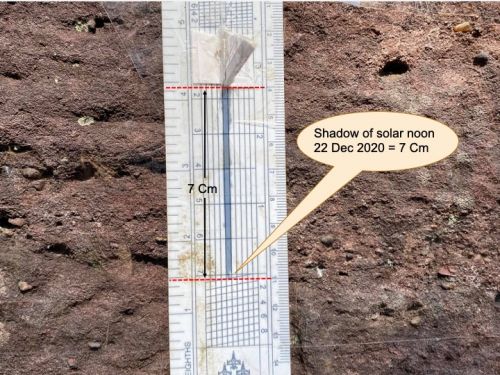
Lenght of shadow at solar noon is recorded at 7 Cm

Angle of incidence at solar noon on winter solstice is calculated to be 40.6012
Step 6 Final result of Earth's axis tilt on Operation Bhishma
Angle of incidence on vernal equinox 21 March 2019 (a) = 17.354
Angle of incidence on winter solstice 22 December 2020 (aw) = 40.6012
Earth's axis tilt = 40.6012 - 17.354
= 23.2472 (error 0.8% from the actual current figure 23.43656 officially shown in Google)
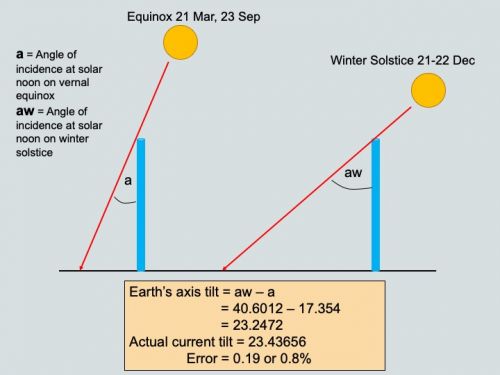
Earth's axis tilt of Operation Bhishma = 23.2472
Summary
The ancient Khmer ruin called Prasat Phupek can be employed as an acurated astronomical device colored with impressive and unforgettable legendary behind. I personally gave her a title of "The Rendesvouz of Science and Belief"



